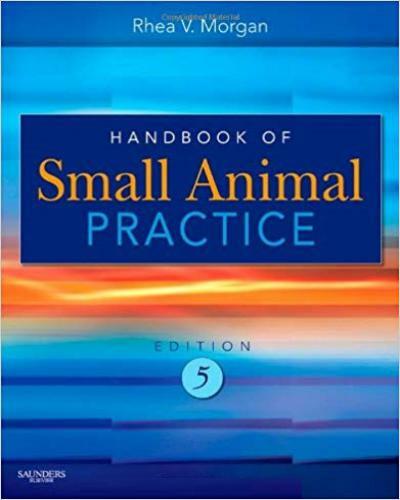Welcome to the Handbook of Small Animal Practice fifth edition. For those of you unfamiliar with HSAP, you will notice it is written entirely in an outline format.
Handbook of Small Animal Practice 5th Edition

Handbook of small animal practice 5th edition
Every effort has been made to keep standardized prose to a minimum. This format provides the busy practitioner with the latest, most applicable information on a subject in a concise and easily retrievable manner.
Whenever applicable, each subject is explored under the headings of Definition, Causes, Pathophysiology, Clinical Signs, Diagnosis, Differential Diagnosis, Treatment, and Monitoring of the Animal. The book consists of nineteen different sections and four appendices. Many sections are subdivided into chapters based on the anatomic components of that body system. In turn, each chapter is organized in a chronological fashion, beginning with congenital and developmental disorders and followed by degenerative, infectious, inflammatory, idiopathic, parasitic, metabolic/toxic, immune-mediated, vascular, nutritional, neoplastic, and traumatic diseases. This chronology is maintained wherever possible so the reader can predict and find the location of a given subject within a chapter.
Although the goals, aspirations, organization, and format of the fifth edition remain similar to previous editions, the following noteworthy changes were made in this edition:
• The first chapter of the book now addresses preoperative evaluation and anesthetic protocols.
• The Cardiovascular, Neurologic, Digestive, Urinary, Musculoskeletal, Dermatologic, Behavioral Disorders, Nutrition, Toxicology, and Environmental Injuries sections were written primarily by new authors.
• Some large chapters were split into two separate chapters so the authors could be more thorough in addressing their respective subjects.
• The Dermatologic System section was reorganized using a problem-based approach. Readers are encouraged to use the index to help locate certain diseases within this section.
• The Toxicology section was also reorganized to better reflect the most common toxicants now encountered in small animal practice.
• The Drug Appendix was extensively revised and updated. I am deeply indebted to the section editors who helped on this project and to all the contributors who provided up-to-date, concise information in their respective chapters. A special “thank you” is due Leah Ann Crussell for her work in producing the drug appendix. Compilation of the drug dosages from all 136 chapters is an enormous and tedious task, and Leah Ann did a great job.
Password: pdflibrary.net
